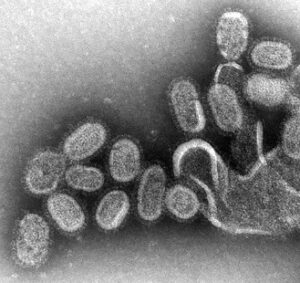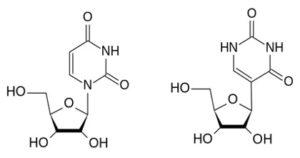
Figure 1: A sample of the metal palladium. As a transition metal, palladium plays a significant role in the catalysis of many organic reactions, especially for cross-coupling reactions to form carbon-carbon bonds.
Source: Wikimedia Commons
In building complex organic molecules needed for medicines, nanotechnology, and other synthetic purposes, catalysts are absolutely necessary. Chemical catalysts are responsible for “speeding up” the rate of a reaction by its lowering activation energy (University of Texas, 2020). Catalysts act to bring components together, where different reactants bind to its surface; in the case of organic synthesis, the catalyst itself is typically a metal like platinum or palladium (University of Texas, 2020). However, because the bonds between the metal and each reactant are weak, the reactants will react with each other before separating from the catalyst. Thus, the catalyst is not consumed in the reaction and can be reused, reducing chemical waste (University of Texas, 2020).
Among the transition metals, catalysts developed around the element palladium have been some of the most versatile and important in the advancement of organometallic chemistry and catalysis. In 2010, Richard Heck, Ei-ichi Negishi and Akira Suzuki were awarded the Nobel Prize in Chemistry for pioneering the development of palladium-catalyzed reactions (Hartings, 2012). The metal has played an important role in catalysis because of its ability to form a d8 electron configuration – which allows the metal to form a square planar geometry that can easily coordinate to many reactants to catalyze reactions, especially for reactants involving double and triple bonds (Hartings, 2012). However, while many catalysts have been developed for the cross coupling of many types of reactants, chemists had struggled to couple commercially available aryl halides and organolithium reagents. Previous research from Hornillos and colleagues had demonstrated that aryl and alkenyl lithium reagents could be coupled to aryl halides through palladium catalysis quite easily, but alkyl lithium reagents were vulnerable to beta hydride elimination and lithium-halogen exchange with the less reactive aryl chlorides (Hornillos et. al, 2014). This would result in the creation of less desirable aryl-lithium and aryl-hydride compounds, which drastically reduced yield of the target cumene (Hornillos et. al, 2014). To avoid this, researchers typically relied on organoboron and organotin compounds to facilitate these reactions by converting the more reactive alkyl lithium reagents to more stable ones; however, this requires an extra step and thus produces more waste (Scherpf et. al, 2020).
Now, recent work from Scherpf and colleagues demonstrated that when palladium catalysts are bound to a special class of ligands, or molecules, called ylide-substituted phosphines, or “y-phos,” the reaction proceeded with high yield and high selectivity (Wiley, 2020). The group decided to use these ligands, composed of a negatively charged carbon center and positively charged phosphonium group because of their strong electron-donating capabilities. This additional electron density increased the nucleophilic character of the palladium, greatly increasing the speed of the first mechanistic step of oxidative addition to the aryl chloride and outcompeting the slower lithium-halogen exchange (Scherpf et. al, 2020). The group found that the joYPhos ligand – where a phenyl group is substituted on the ligand – to be the most effective ligand, with a 78% yield of the coupling product 4-sec-butyl-anisole from 4-chloro-anisole and sec-butyllithium in just one hour (Scherpf et. al, 2020). While other ligands such as keYPhos and and trYPhos had 80-90% yields, they were far less selective, with less than 60% of the reactants being converted into the desired 4-sec-butyl-anisole (Scherpf et. al, 2020). The group then tested the catalyst with other aryl halides but found that aryl bromides and iodides were less selective in producing the desired product due to faster lithium-halogen exchange. Additionally, computational studies revealed that the more sterically hindered alkyl lithiums like tert-butyl lithium had lower yields, as steric effects with the bulkier alkyl groups facilitated beta-hydride eliminations by lowering the activation energy of that pathway (Scherpf et. al, 2020).
Finally, to evaluate the applicability of this catalyst to the synthesis of industrially relevant molecules, the group tested the catalyst with larger quantities of starting materials. The group demonstrated that 3-chlorothiophene, a precursor to the synthesis of polythiophenes important in materials science, could be alkylated with hexyllithium in 73% yield to produce 1.84 grams of product (Scherpf et. al, 2020). Likewise, the group synthesized important building blocks for Siponimod and Lesinurad, which are used to treat multiple sclerosis and gout, respectively. Unlike the multi-step synthetic procedures of the past, this one-step reaction was able to produce building blocks for both drugs at yields of 60% and 79%, respectively (Scherpf et. al, 2020). Ultimately, the authors concluded that this new method could avoid the use of organotin and organoborn reagents, while being effective at conducting alkyl lithium and aryl halide couplings in high yields (Wiley, 2020).
References
Hartings, M. (2012). Reactions coupled to palladium.Nature Chemistry, 4(9), 764-764. doi:10.1038/nchem.1437
Hornillos, V., Giannerini, M., Vila, C., Fananas-Mastral, M., & Feringa, B. L. (2014). ChemInform Abstract: Catalytic Direct Cross-Coupling of Organolithium Compounds with Aryl Chlorides.ChemInform, 45(10). doi:10.1002/chin.201410093
Scherpf, T., Steinert, H., Großjohann, A., Dilchert, K., Tappen, J., Rodstein, I., & Gessner, V. H. (2020). Efficient Pd‐Catalyzed Direct Coupling of Aryl Chlorides with Alkyllithium Reagents.Angewandte Chemie, 132(46), 20777-20784. doi:10.1002/ange.202008866
University of Texas (2020). Catalyst. Retrieved November 12, 2020, from http://ch302.cm.utexas.edu/kinetics/catalysts/catalysts-all.php
(2020, October 9). Palladium catalysts can do it: Direct coupling of aryl halides and alkyllithium compounds by palladium catalysis. ScienceDaily. Retrieved November 11, 2020 from www.sciencedaily.com/releases/2020/10/201009102741.htm
Related Posts
A Spoonful of (Modified) Sugar as an Antiviral Medicine
Figure 1: A negative stain transmission electron micrograph of Influenza...
Read MoreResearchers produce important RNA subunit using a biocatalyst for the first time
Figure 1: The image on the left displays a standard...
Read MorePossible Biosignature for Life Discovered on Venus
Figure 1: This is an image of Venus with its...
Read MoreAndrew Sasser




Comments are closed.